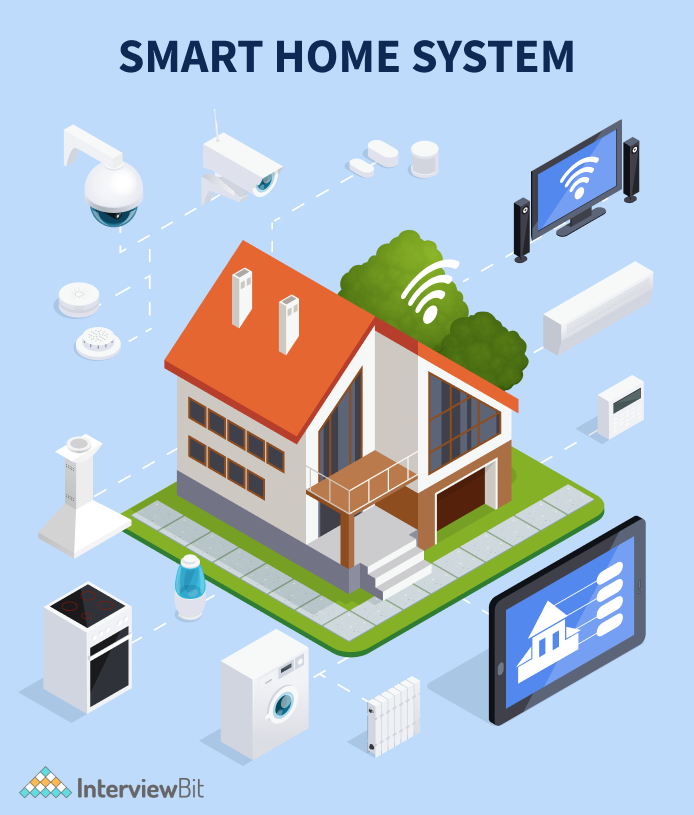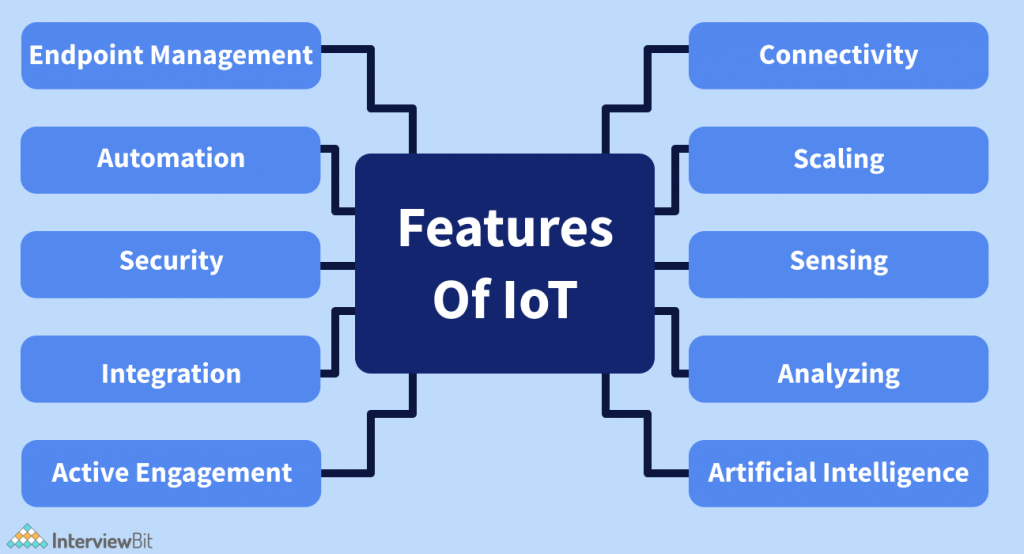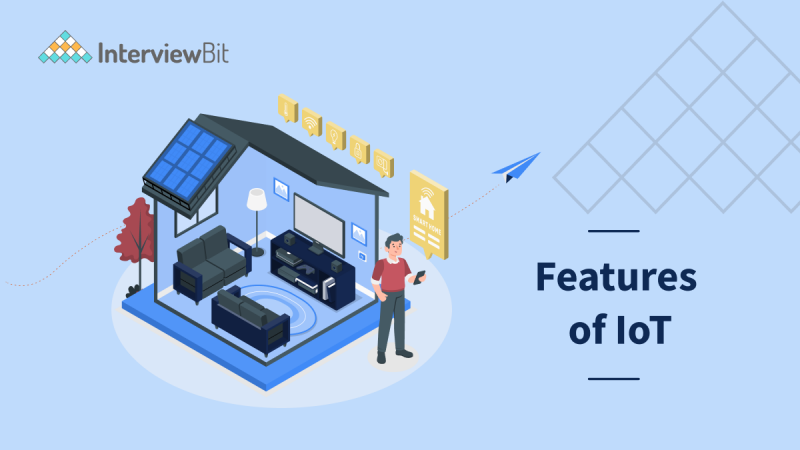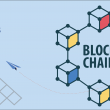- What’s IoT?
- Uses of IoT
- Features of IoT
- Connectivity
- Scaling
- Sensing
- Analyzing
- Artificial Intelligence
- Smaller Device
- Dynamic Nature
- Active Engagement
- Integration
- Automated
- Security
- Endpoint Management
- Conclusion
- Frequently Asked Questions
- Q.1: What are the IoT protocols?
- Q.2: What are the advantages of IoT?
- Q.3: If you want to explain IoT with a simple equation, what would it be?
- Q.4: How many key features do IoT have?
- Additional Resources
What’s IoT?
There has been a lot of buzz around the Internet of things or IoT. The Internet of things is essentially changing the world we live in. IoT is bringing in the digital transformation of cities, workplaces, and businesses. Hence, it is important to understand what IoT is. In this article, we are going to understand IoT and look at some critical features of IoT.
Suppose you are riding back to your house after a day of intense work in the office. It is hot outside, and you want your room temperature to be a sweet 24 degrees Celsius. The smart air conditioning system in your house can turn itself on 10-15 minutes before you reach home, according to the location sent to it by your car’s GPS. When you enter your home, lights in your home turn on automatically. Wouldn’t it be nice? All these things have been made possible because of the Internet of Things (IoT).

So what is this IoT all about? The term Internet of Things was first coined by Kevin Ashton in 1999. Attempts to properly define what IoT is, have been made since the term was first coined. According to the definition, IoT means implementing functionality in everyday objects through interconnection so that they can send and receive data. But, this definition might be too technical for non-tech-savvy people to understand. In simple terms- IoT enables things in our daily life to interact and communicate with each other so that they can perform useful tasks, just like our smartphones and laptops are connected via the internet to share information with each other. Think of it as a World Wide Web where everything including laptops, computers, smartphones, and devices are connected. These devices can gather data, interact with each other, and analyze the data to extract information of business importance. These devices can even respond based on the data gathered, for example, a smart lamp might turn itself on when any person walks into the room. The working of IoT starts with the devices themselves. These devices, such as mobiles, smart wearables, laptops, electronic equipment, share data with a server or cloud. The platform collects the data and analyzes it. After intelligent analysis, the platform then sends back the decision to the devices.
Confused about your next job?
Examples of the Internet of Things range from consumer devices, such as smart wearables and accessories, to industrial equipment like smart office solutions, smart machines. The list of fields where IoT can be potentially implemented is quite diverse, some of them being-smart city projects, vigilance systems, environmental monitoring, and digital healthcare systems. IoT is not just limited to the devices and their connectivity, it is an amalgamation of various cross-domain technologies like cloud computing, artificial intelligence, big data, and machine learning. Let us get some more insights on the uses of IoT.
Uses of IoT
The uses of IoT are so diverse and large, they all can not be discussed here. Some important among them are:
- Healthcare: Patients can be monitored in real-time using IoT.
- Public Sector: Government authorities can notify people of a city of outages or interruptions in the supply of water or electricity. Parking spaces can be well maintained using data obtained by optical or infrared sensors.
- Manufacturing: Manufacturers can deploy IoT to monitor the manufacturing processes and avoid any irregularities. The quality of the products can also be confirmed using IoT.
- Automobiles: IoT can be implemented to supervise the production of automobiles. Even after the car has been sold, the IoT can enhance the user experience on the road (kind of like what Tesla does).
- Retail: Retailers can benefit a lot if they implement IoT. They can use IoT to optimize the supply chain, reduce operational costs and improve customer experience. They can use smart shelves to notify them if they run out of products, for instance.
- Transportations and logistics: Transport vehicles can be equipped with IoT sensors to tell drivers the optimal driving route according to weather, road condition, and traffic. This can save a lot of costs.
- Wearables: Smart wearables like smartwatches can track everything from calories burned to heartbeat rate and blood oxygen levels.
- Smart homes: Smart homes are the most popular application of IoT. Smart surveillance systems, smart air conditioners, smart lighting systems, smart speaker systems, and smart fridges are some features of smart homes.

Features of IoT
We have listed some of the features that make IoT what it is in the present digital scenario. IoT devices have several sets of features that are common. They are:

Connectivity
The heart and soul of IoT is its connectivity. Connectivity means the establishment of a connection between different devices (or nodes) so that they can communicate on their own. In IoT, various devices, sensors, computers, and data busses need to interact and communicate with each other. A fast, safe, and secure connection is a must for IoT to be of any business use. IoT also connects devices with cross-domain technology like cloud computing, artificial intelligence, and blockchain technology. We can connect them over radio waves, Wi-Fi, Bluetooth, or wires.
Scaling
IoT systems are designed in such a way that the number of devices, sensors, or computers can be scaled up and down according to the need. An IoT system should be elastic enough so that it can handle workload during peak demand hours and can resort back to the normal state when the demand is low.
Sensing
IoT devices gather information about their surroundings (such as temperature, light, sound, acceleration, pressure) and then, after analyzing the data, take a decision. Thus, sensors help in automation by gathering information and taking actions that would otherwise, be done by humans. The raw data gathered, and the analyzed data, serve as the basis of the functioning of IoT. For example, in an automatic door, sensors would collect data through sensors such as radar sensors and optical sensors. If it detects a person coming, it will open the door automatically. Some sensors used in IoT are- Humidity sensor, temperature sensor, Accelerometer, Gyroscope, Motion sensor, image sensor, level sensor, and Proximity sensor.
Analyzing
We know IoT gathers raw information through sensors, but why does IoT need data? What does IoT do with all that raw data? Data as such has no value of its own. It is meaningless and useless until it is purposefully processed to gain some meaningful insights from it. IoT gathers raw data to extract something meaningful out of it. Analyzing the raw data in terms of its structure, correlation, and usability is necessary because, if processed properly, it can be very useful. In the above-mentioned example of the automatic door for instance, after analyzing the data through sensors, it should be able to differentiate between a person and an animal.
Artificial Intelligence
IoT becomes a lot more useful when combined with artificial intelligence. For instance, if you are out of groceries, your smart refrigerator can notify you to bring some on your way back home. Things like these have been made possible by the application of artificial intelligence. IoT devices collect raw data from their surroundings and convert them into something useful and insightful. The IoT devices and systems are also trained with various machine learning models so that they can better understand the changes in their surroundings and perform better.
Smaller Device
Devices and equipment (like semiconductor chips, sensors) are getting smaller and smaller these days. In IoT, these small-built devices efficiently deliver precision and performance. It is fascinating to think that devices so small can deliver so much and enhance our quality of living (for example, small sensors can tell us the quality of air in that area, protecting us from pollution).
Dynamic Nature
IoT systems should be dynamic in to change according to the changes in their environment to be of any business use. Let us understand this with an example. A smart air conditioner should be able to set the temperature of the room according to the prevalent weather conditions using the data gathered by the temperature sensor. It must also be able to set the perfect humidity level inside the room according to the changes in the humidity level of the surroundings.
Active Engagement
IoT connects its devices and products with cross-domain technologies like cloud computing, artificial intelligence, blockchain technology, etc. An active engagement between these products and technologies is essential to gather and manipulate data to make it of business use. Raw data has huge potential and can improve business decisions considerably. Therefore, an active engagement between various IoT products and these technologies is the need of the hour.
Integration
IoT integrates various cross-domain technologies like cloud computing, artificial intelligence, big data, and deep learning to provide users with a wonderful experience. Internet of things is no more internet of things, it has, in fact, become the internet of everything. An entire ecosystem of integrated devices performs with great efficiency to enhance our quality of living.
Automated
Every technology comes with a certain degree of automation. In the case of IoT, the theme is all about automation. IoT was developed to make people’s life and business easier with automation, i.e., IoT farming system automates irrigation and prevents wastage of water as well.
Security
Security is one of the major concerns among the users of IoT. IoT systems carry and store a lot of sensitive information, so the security of the devices and the data flowing between them should be given foremost priority. Proper security and safety measures are implemented while designing an IoT system to prevent a possible breach of security. Resources and investment required to ensure a safe and conductive IoT system are huge, but its safety and security must be ensured. Failing to do so can lead to mistrust among its users and businesses and can reduce its demand.
Endpoint Management
A well-trained and carefully implemented IoT is an asset for the business world. However, it is important to be the endpoint management of IoT systems, otherwise, the whole system might collapse. For example, let us say your smart fridge orders groceries to a retailer when you are out of it. But, if you are not at the home for some days, it might lead to the wastage of groceries and is a failure of IoT. Therefore, endpoint management is a necessary characteristic of the Internet of things.
Conclusion
Needless to say, the popularity and hype around the internet of things are huge. The IoT is a rapidly expanding technology with continuously and exponentially increasing demand. IoT is a technology of interconnected smart devices that has different roles in different industries. IoT finds its application in various domains like- healthcare, marketing, business, transportation, home application, smart cities, smart cars, waste management, asset tracking, environmental monitoring, energy sector, and education applications. It is often said that the Internet of things has brought about the fourth industrial revolution of technology. As companies are starting to invest in the IoT, it is being realized that IoT is much more than just an interconnection of smart devices.
Despite being a reality, IoT is still at a nascent stage, regardless of the massive attention and its application in various areas. There are concerns (like safety and security, the complexity of implementing IoT systems, compliance) related to the technology. There are some challenges that need to be addressed, but things ahead are looking good, as we are just starting. The Internet of things has a long way to go, and the growth of connected ‘intelligent things’ will continue to rise exponentially over the years.
Frequently Asked Questions
Q.1: What are the IoT protocols?
Ans: IoT protocols are modes of communication that ensure security for data sharing between various devices of IoT. Some protocols used by IoT are- Hypertext Transfer Protocol (HTTP), LoRaWan (Long-Range Wide Area Network), Bluetooth, ZigBee, Message Queue Telemetry Transport (MQTT), Machine Machine Communication Protocol (M2M), etc.
Q.2: What are the advantages of IoT?
Ans: The advantages of IoT span every sphere of life and industry. Here are a few advantages of IoT:
- It assists and improves healthcare services.
- Improves customer engagement
- Effective management of resources
- Environment monitoring
- Smart home equipment
Q.3: If you want to explain IoT with a simple equation, what would it be?
Ans: In my opinion, the equation of IoT might be-
Internet (connectivity) + Things (IoT devices) = IoT (internet of things)
Q.4: How many key features do IoT have?
Ans: IoT has ten major features, and they are- scalability, connectivity, artificial intelligence, security, dynamic nature, endpoint management, integration, analyzing, and compact nature of devices.




